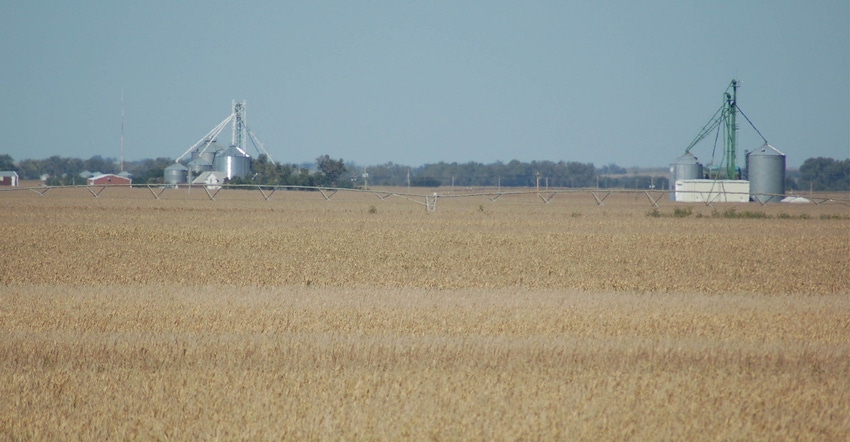
It's common knowledge that the average age of farmers and ranchers in the U.S. is increasing. And with that increasing age comes a massive transition of ag land assets in the years to come.
"Landowners are getting older and passing the land on to the next generation of landowners," says Jim Jansen, Nebraska Extension agricultural economist. "To generate a return on those assets, whether in crop shares, rents or flex leases, landowners that are farming are trending toward larger farms, and there's a higher portion of beginning farmers that are renting land than better-established producers with more equity."
The 2014 USDA National Agricultural Statistics Survey’s Tenure, Ownership and Transition of Agricultural Land (TOTAL) report, analyzed in 2016 by the USDA Economic Research Service, highlights the percentage of ag land rented vs. owned at the county level across the country. In many counties in eastern and central Nebraska, over 50% of the cropland is rented out — and that's largely due to the commodity being produced — usually corn and soybeans.
This has different implications for landlords and tenants in different areas. If the land is rented out by a retired farmer or rancher still living nearby, the landowner may be willing to share certain responsibilities — like maintaining fence or checking cattle. It could also be an absentee landowner who's inherited the property — or in some cases, multiple absentee landowners. In this case, the landowner may not be willing or able to help maintain the property or its improvements.
The question is: Who stands to inherit the land? "Even if we do have less farmers in the future, we might have more absentee landowners than we've had in the past for Nebraska," Jansen says.
"With changes in demographics across the state, landownership is changing," he says. "It's changing to the degree there are various estate arrangements, such as trusts, that may divide ownership from a couple that owned the property to two or three descendants and their spouses."
When working with multiple landowners, Jansen outlines five tips for tenants and landlords:
1. Identify one individual among the landlords with an appropriate background to manage the land — typically someone who understands the business.
"The most successful relationships we've seen is when we have one key contact with a background in managing a small business or experience in finance or economics," Jansen says. "Even if it's not directly in agriculture, the absentee landowner's ability to adapt or learn appears to be a little better in those cases when you identify one party. This person then may relay the business proceedings from the land to the other owners of the land in a proper manner."
2. Landlords should keep records on the land, including documentation of conversations that would impact the property. This might include conversations with tenants, representatives from FSA and the landowners themselves. It's also a good idea to have a roughed-out calendar for when rental negotiations might take place and when key documents need to be signed.
3. Keep copies of the lease and any other important legal documents associated with the lease each year — and in a fireproof box or container. Share those documents with the parties involved that would like a copy of the records.
4. Maintain an open line of communication. It's the responsibility of the landowner to stay engaged with farm operations, and keep records on yield history, pest history, and for cattle producers, stocking rates. However, Jansen notes tenants should also share information to keep landlords in the loop; this might include information like yield records. Yield histories show the landowner how productive the ground has been, but landlords should treat this information with respect and not try shop around to find the next highest-paying renter just because the current tenant was willing to share production information.
"We need to make sure landowners are aware of what's happening on their property," Jansen says. "With more absentee land ownership, there may be a disconnect between what tenants are doing and what the landowner thinks they're doing."
5. One of the big things to keep in mind is the goal for the continuity of the land, or managing the land for success over the long term. On that same note, both parties should have a clear understanding of expectations for the property.
"That includes an open line of communications, continuity and delivering a consistent message across time so landlords and tenants both understand responsibilities, and the outcome the landlord would like to see on the property," Jansen says. "Alignment of expectations of the both parties is key to a successful landlord-tenant relationship."
About the Author(s)
You May Also Like






